Temperature-Dependent Conformational Transitions of PNIPAm Hydrogel via BeScan Lab
2024-07-15Application Note
The stability analysis system as well as software provided by BeScan Lab offer a fast and accurate approach to assess the temperature characteristics of PNIPAm. Its programmable temperature control enables precise monitoring of PNIPAm's conformational changes and stability across various temperature ranges, supporting efficient product development and cost savings. Researchers can objectively assess the behavior of PNIPAm under different temperatures, crucial for refining applications in pharmaceuticals, chemicals, and materials science. Additionally, the system enables precise management of thermosensitive hydrogels, meeting specific needs like drug release and sensor responsiveness through temperature adjustments.
| Product | BeScan Lab |
| Industry | Polymers and Plastics |
| Sample | PNIPAm hydrogel |
| Measurement Type | Stability |
| Measurement Technology | Static Multiple Light Scattering (SMLS) |
Jump to a section:
Introduction
Poly(N-isopropylacrylamide), commonly abbreviated as PNIPAm, is a temperature-responsive synthetic polymer that exhibits robust hydrophilicity and excellent solubility in water at ambient and lower temperatures. However, as the temperature approaches its lower critical solution temperature (LCST) of about 32 °C - 35 °C, PNIPAm undergoes a microphase transition. This transition predominantly governed by hydrogen bonding and hydrophobic interactions, induces a conformational change in the polymer chains, shifting them from an extended to a collapsed state. PNIPAm's temperature sensitivity imparts significant potential for diverse applications in fields such as drug delivery, biomedical materials, intelligent coatings, and biosensors.
This study explores the optical characteristics and conformational changes of PNIPAm chains across various temperatures. The BeScan Lab Stability Analyzer is employed to swiftly and precisely evaluate the conformational dynamics of PNIPAm under different thermal conditions. Understanding PNIPAm's temperature-responsive properties will provide crucial insights, for refining and optimizing its utility across pertinent domains.
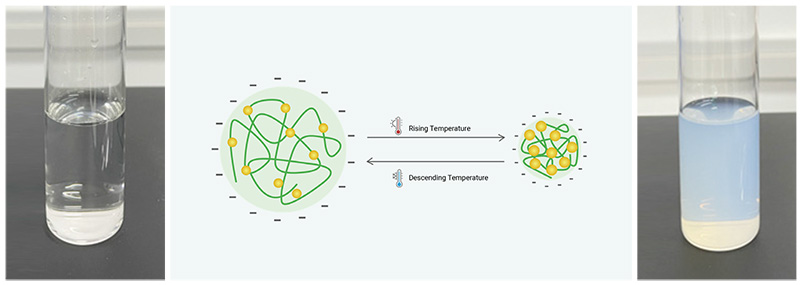
Figure 1. State and conformational transition of PNIPAm at 28 °C (left) and 50 °C (right)
Principle
BeScan Lab utilizes Static Multiple Light Scattering (SMLS) technology, directing 850 nm light pulses vertically into the sample. Data is collected at 20 µm intervals, monitoring fluctuations in the backscattering and transmission levels over time to detect sample instability.
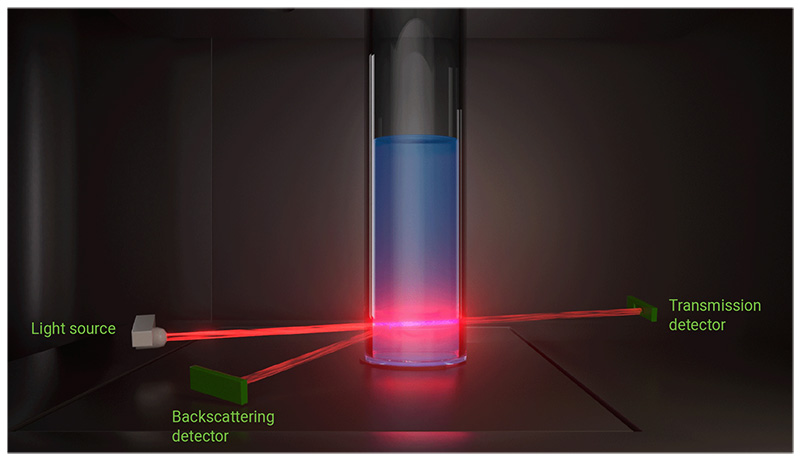
Governed by the Mie theory, signals of transmitted and backscattered light directly correlate with particle concentration (φ) and size (d). BeScan Lab provides an Instability Index (IUS) to assess the stability of dispersions, calculated by summing signal variations across sample height and time. A higher IUS indicates lower stability, automatically determined for each scan using a specific formula:

Experimental
BeScan Lab features unique temperature trend scanning, enabling programmed temperature ramping up to 80 °C. In this study, BeScan Lab was used to analyze a prepared 1 mg/ml PNIPAm solution, with 10 ml placed in a sample bottle. The sample bottle was then placed in the sample chamber of BeScan Lab and kept at 28 °C for 10 minutes. Subsequently, scans were conducted with 1°C intervals, covering a temperature range from 28 °C to 50 °C. Before each test, the temperature was allowed to stabilize for 30 minutes, after which scanning commenced to detect changes in transmitted and backscattered light signals of the PNIPAm with temperature and sample height.
Results
The raw data of the transmitted light signal
Figure 3 reveals detailed insights into how the transmitted light signal of PNIPAm varies with temperature and position. The PNIPAm hydrogel displays exceptional transparency at low temperatures and exhibits significant sensitivity in its transmitted light signals. BeScan Lab enables comprehensive research into the PNIPAm system's characteristics across varying temperature conditions by tracking these variations.
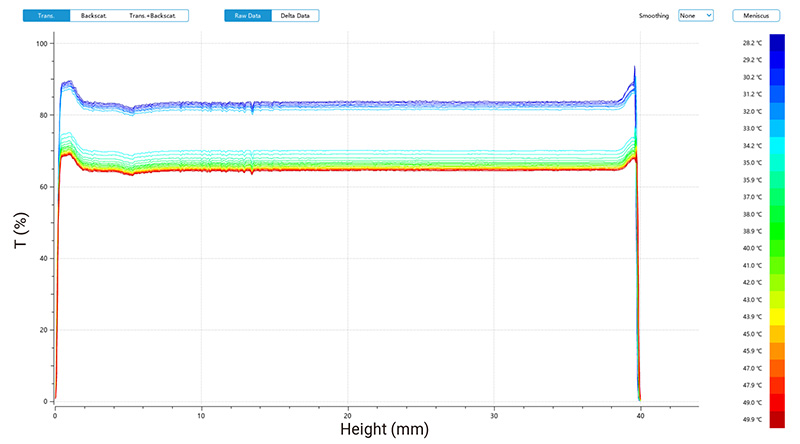
Figure 3. Raw transmission variation of 1 mg/ml PNIPAm hydrogel at various temperatures
The delta data of the transmitted light signal
The transmitted light delta data (dT) provides detailed insights into the variations in the transmitted light signal with respect to sample height and time. Figure 4 reveals the following observations: from 0 mm to 40 mm, there is a decrease in the transmission signal, indicating a gradual reduction in system transparency. The parallel changes in transmission signal across different temperatures suggest a relatively uniform spatial distribution during the transition process. A significant drop in transmission light intensity is observed starting at 33 °C, consistent with existing literature.
PNIPAm is a thermoresponsive polymer that disperses in aqueous solutions and responds to temperature changes. As illustrated in Figure 4, temperature elevation significantly modulates the particle size and optical properties of PNIPAm hydrogel. At 25 °C, the hydrogel particles measure approximately 700 nm in diameter, but this size decreases to about 350 nm at 50 °C. This decrease is attributed to the phase transition at the LCST, around 32 °C, where the hydrogel transitions from a hydrophilic, expanded state to a hydrophobic, collapsed state due to increased hydrogen bonding and intermolecular interactions.

Figure 4. Delta transmission variation of 1 mg/ml PNIPAm hydrogel at various temperatures
Following contraction, the increased colloidal density affects the refractive index increment (dn/dc). The intensity of scattered light increases with temperature, being proportional to the square of the refractive index increment, (dn/dc)2, which explains the observed increase in backscattered light intensity with rising temperatures. For further details, refer to the study on Characterizing PNIPAm Thermal Sensitive Hydrogel.
Moreover, the hydrogel's contraction leads to a reduction in transmitted light intensity. The denser polymer network after contraction scatters and absorbs more light, reducing its passage through the material. The aggregation of polymer chains also complicates light propagation within the hydrogel, contributing to the diminished transmitted light.
Instability Index (IUS) variation with temperature
The Instability Index (IUS) serves as a tool for monitoring dynamic shifts in physicochemical properties as samples age at varying temperatures. This index is derived from the magnitude of alterations and changes in concentration within the sample, with higher IUS values denoting more significant changes.
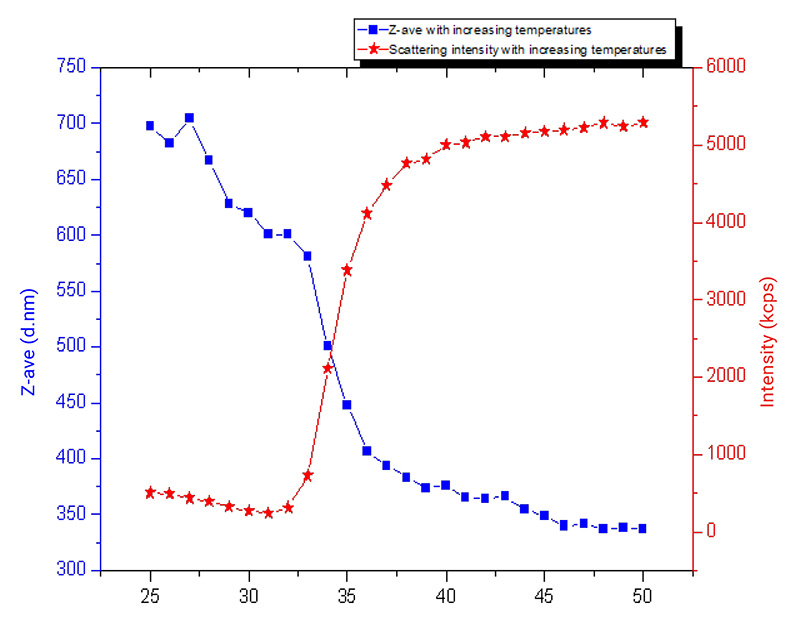
Figure 5. Temperature-responsive particle size and scattering intensity in PNIPAm hydrogel
Figure 6 illustrates the fluctuation of the Instability Index (IUS) for the PNIPAm system across different temperatures. Within the temperature range of 28 °C to 33 °C, a gradual uptick in the IUS value is observed, indicating subtle shifts within the system. However, beyond 33 °C, there is a rapid surge in the IUS value, signaling significant changes within the system.
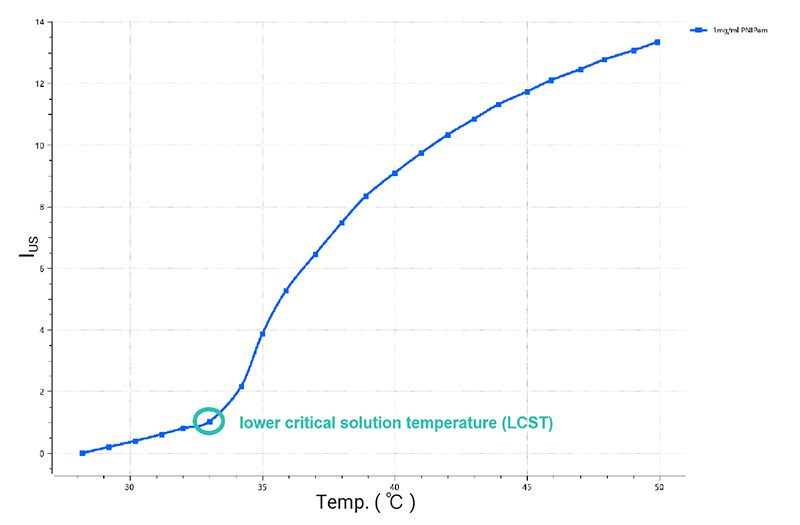
Figure 6. Variation in instability index of 1 mg/ml PNIPAm hydrogel at various temperatures
Temperatures exceeding 33 °C can induce conformational transitions in PNIPAm molecular chains, leading to a marked decline in system transparency. By monitoring the variation in the IUS index, we can track the conformational and optical alterations of the PNIPAm system at varying temperatures, providing valuable insights into changes in molecular structure and behavior within the system.
Conclusion
The stability analysis system as well as software provided by BeScan Lab offer a fast and accurate approach to assess the temperature characteristics of PNIPAm. Its programmable temperature control enables precise monitoring of PNIPAm's conformational changes and stability across various temperature ranges, supporting efficient product development and cost savings. Researchers can objectively assess the behavior of PNIPAm under different temperatures, crucial for refining applications in pharmaceuticals, chemicals, and materials science. Additionally, the system enables precise management of thermosensitive hydrogels, meeting specific needs like drug release and sensor responsiveness through temperature adjustments.
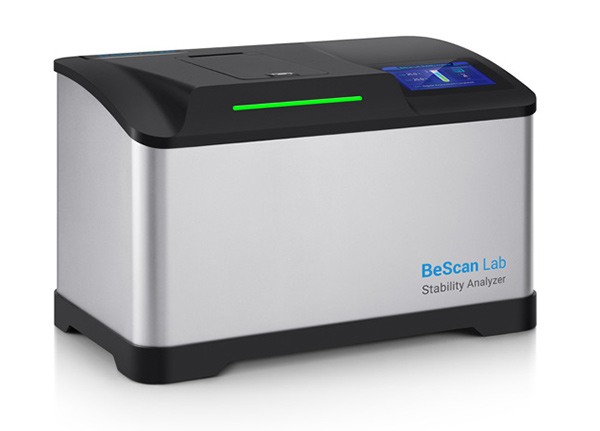
About the Authors
 |
Xin Yan Application Engineer @ Bettersize Instruments |
 |
Dr. Hui Ning Chief Product Officer @ Bettersize Instruments |
|
BeScan Lab Stability Analyzer
|
 |
Recommended articles
Rate this article
